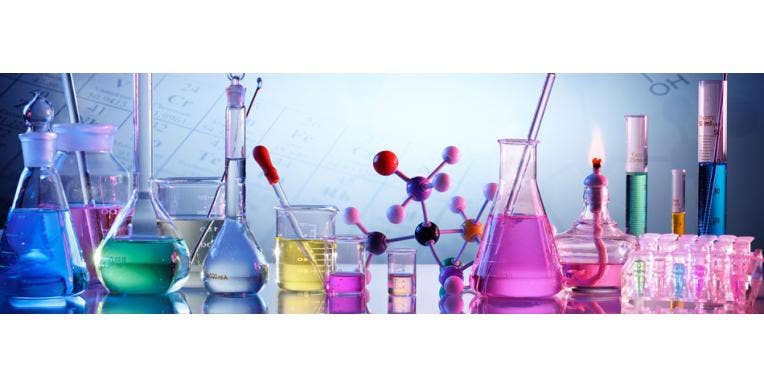The Different Types of Glass in the Lab
Glassware in the form of beakers, Petri dishes, vials, burettes and cylinders among others has always been a part of even the smallest laboratories. This is because of the unique inert qualities that allow chemical substances to be placed inside it. However, not all glassware is equal. There are different materials used in making laboratory glass such as quartz, soda-lime, borosilicate and actinic among others. Here are few of the more common glass types used in labs.
Borosilicate Glasses
This is among the most common type of glass found in laboratories and is used in beakers, vials, test tubes, flasks etc. This material has a low expansion that makes it suitable for a wide variety of laboratory applications. It has a high resistance to chemical attacks and a very low coefficient of expansion. However, there are some substances that this glass material is not inert to. These are:
- Hydrofluoric acid
- Strong Caustic solution
- Phosphoric acid
Hydrofluoric acid has the most effect even when present in small concentrations. Elevated temperatures can cause phosphoric acid and caustic solutions to affect your experiment.
There are a number of advantages of using this glass material:
- Can withstand high temperatures easily
- Inert to almost all chemicals
- Can withstand high agitation & thermal stress
- Extremely low coefficient of expansion
- Corrosion-resistant
Glassware for laboratories is affordable and readily available. You can use this material in almost all lab application with proper care.
Quartz Glass
Silica glass is another name for labware made from this material. These are among the most uncompromising equipment found in a laboratory. They are created at high temperatures of 2,000C by melting sand. This is normally transparent with superior thermal and optical properties.
If you are conducting experiments with wide temperature differences, then this is the ideal glass for you. It has a low coefficient of thermal expansion which makes it very suitable to be used in any temperature. There is a wide range of laboratory ware available in this material including joints, tubes, flasks, beakers, cuvettes and crucibles.
There are a number of areas where you can easily use this glass. This can be used for volumetric measuring to give proper results. It can also be used to hold and store samples or chemicals. Another area of functionality is mixing chemicals for experiments and preparing solutions. You can also use this in various other lab processes such as spectrophotometry, distillation, contained chemical reactions and chromatography.
This material has unmatched thermal properties that are far superior to other glass materials. It can be heated till 15000C and then dunked in cold water without a crack. This makes it safe to be used for experiments involving massive temperature changes. It can be used to heat materials such as gasoline as well.
Silica glass is chemically pure and does not react with the reagent it holds. This gives you clear and concise results of your experiment. This glass also has the ability to pass a broad range of light wavelengths. This makes it suitable for experiments involving infrared and UV radiation.
These are some of the reasons why you should include this glass in your lab equipment list:
- High thermal shock resistance
- Superior to borosilicate
- Extremely Pure material
- Chemically Inert
- Splendid Optical Transmission
However, lab equipment made from this material is significantly more expensive than others. Plastics and other lower-cost materials have replaced this in recent years.
Actinic Glass
There is some glass equipment that is tinted dark brown or amber. These can be created from any material and are named after the colour. This is done to protect light-sensitive chemical compounds from getting altered by infrared radiation, visible light and ultraviolet radiation.
Amber glass is ideal for light-sensitive applications. Generally, tinted glass is used only in bottles to store chemicals in solution or powder form. These were the rage in olden times when apothecaries were common. Emerald green was a popular colour for ornamental purposes.
Here are some of the benefits of using actinic glass:
- Light sensitive
- Inert to chemicals
- Store compounds safely
- Experiments sensitive to UV radiation
It is important that you always check the type of liner used inside the cap of an amber glass bottle. It might not be inert if the liner contains plastic.
Soda Lime Glass
This glass is extremely fragile and has a low melting point. It is almost impossible to repair and does not have high thermal shock resistance. You might wonder about the functionality of this ordinary glass in laboratories. The answer lies in its affordability. It is a lower cost and can be easily made. Hence, it is used for lab equipment that is required in abundance such as pipettes, measuring cylinders, disposable test tubes and volumetric flasks. Here are some properties of this glass that makes it useful in laboratories:
- Chemically stable
- Highly Inert
- Extremely Workable
- Affordable
- The true usefulness of this glass lies in its affordability. It is widely used for volumetric glassware that does not require heating.
Conclusion
Almost all lab equipment serves a unique purpose. However, you need to take care of them. You need to make sure that you clean your laboratory ware carefully if you want them to last longer. Care should be taken to soak it in an alkaline solution for a couple of minutes before washing with a DI rinse. You should also never use a wire brush to scrub as it might lead to corrosion.


